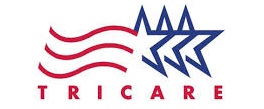Medication assisted Management (Mat)
Skilled Therapeutic Interventions. Recovery From Substance Abuse Is Possible.
Medication Assisted Management Program
The goal of Emerald Psychiatry & TMS Center’s MAT Program is for you to recover and take back control of your life.
We understand that all people want to live productive and meaningful lives that are free from substance abuse.
 The United States is in the middle of a historically unprecedented opioid epidemic. Today, more people die of drug overdoses than any other form of accidental death. From 1999–2018, almost 450,000 people died from an overdose involving any opioid, including prescription and illicit opioids.
The United States is in the middle of a historically unprecedented opioid epidemic. Today, more people die of drug overdoses than any other form of accidental death. From 1999–2018, almost 450,000 people died from an overdose involving any opioid, including prescription and illicit opioids.
This epidemic is attributable to a confluence of circumstances, primarily overprescribing by physicians combined with an influx of potent heroin from other countries. The epidemic has received additional fuel and urgency from the rise of extremely potent synthetic opioids such as fentanyl, carfentanyl, and others. These synthetic drugs are often consumed unknowingly, mixed in illicit street heroin or compounded in fake versions of prescription opioids.
As with other chronic medical illnesses, opioid addiction, once developed, has no “cure” and requires ongoing monitoring and treatment. Therapy alone and abstinence-based models rather than medication-assisted treatment have dominated opioid treatment until now. Sadly, detoxification combined with psychosocial treatment, without Medication Assisted Treatment (MAT) relapse rates remain at 90% or higher.
 Buprenorphine (the active ingredient in Suboxone) is a long-acting, high affinity partial opioid agonist that works on opioid receptors. As a long-acting agonist, buprenorphine prevents withdrawal and craving and stabilizes opioid receptors. As a high-affinity agonist, buprenorphine blocks other opioids from binding, preventing abuse of other opioids. As a partial agonist, buprenorphine has a low overdose risk, and no intoxication in the opioid dependent.
Buprenorphine (the active ingredient in Suboxone) is a long-acting, high affinity partial opioid agonist that works on opioid receptors. As a long-acting agonist, buprenorphine prevents withdrawal and craving and stabilizes opioid receptors. As a high-affinity agonist, buprenorphine blocks other opioids from binding, preventing abuse of other opioids. As a partial agonist, buprenorphine has a low overdose risk, and no intoxication in the opioid dependent.
Research and studies have shown that patients initiated on buprenorphine are more likely to be sober, employed, and involved in 12-step groups after 18 months. Buprenorphine significantly lowers the risk of mortality, including overdose death, and adverse outcomes. Studies have also shown significantly improved quality-of-life ratings with maintenance buprenorphine. Patients on buprenorphine have reduced rates of HIV and hepatitis C transmission compared to abstinence-based therapy or detoxification alone.
Despite substantial evidence for its efficacy and well-developed models of care, buprenorphine remains underutilized. The need for further prescribers is particularly evident in the rural United States. As of 2015, the majority of US counties (53.4%) were without a single buprenorphine prescriber despite it being an evidence-based treatment for opioid use disorder.
5 Misconceptions about Suboxone:
(Click the + icon)
1. Suboxone just substitutes one drug for another.
If used as directed, Suboxone is a medication, not a substance. It is a stable, safe, long-acting medication with a ceiling effect. It is prescribed for the specific effect of improving patients’ physical and mental health. Thus, it has a clear indication, unlike substances of abuse.
2. Suboxone is a “failure of willpower” or “giving up”.
Addiction is a medical disease, not a moral failure. Treatment with Suboxone allows stabilization of opioid receptors so that patients are able to make changes in lifestyle, behaviors, and psychiatric condition to allow ultimate recovery rather than cycles of relapses. The mortality associated with any relapse on opioids is too high and too final, especially since there are more potent substances such as fentanyl and carfentanyl out there.
3. Suboxone is incompatible with 12 Step Programs such as AA/NA.
The 12-step groups distinguish between taking medications as prescribed and substance use. Numerous substance abuse treatment programs combine Suboxone use with 12-step facilitation. The Hazelden Betty Ford Foundation, possibly the most respected substance abuse treatment institution, has been pioneering integration of partial-agonist therapy with 12-step groups.
4. Patients get “high” on Suboxone.
Intoxication from Suboxone does not occur if a patient is already opioid dependent. Intoxication occurs only in patients who combine Suboxone with other substances, do not take it as directed, or use it to medicate withdrawal between episodes of use of other opioids. This misuse can be addressed with increased monitoring, urine drug testing, and film/pill counts. Patients are safe to drive while taking maintenance doses of Suboxone.
5. Patients will just sell Suboxone.
Physicians can monitor for diversion of Suboxone by instituting film/pill checks and checking urine buprenorphine levels. Furthermore, diversion of medications is not unique to opioids or buprenorphine. The rates of diversion are similar between buprenorphine and antibiotics. The vast majority of diverted buprenorphine is used to self-treat addiction; 64% of opioid users in one study reported using illicit buprenorphine because they were unable to afford or to access treatment.
Our MAT Program Is Focused On Recovery. Reach out and MAKE HOPE HAPPEN.









